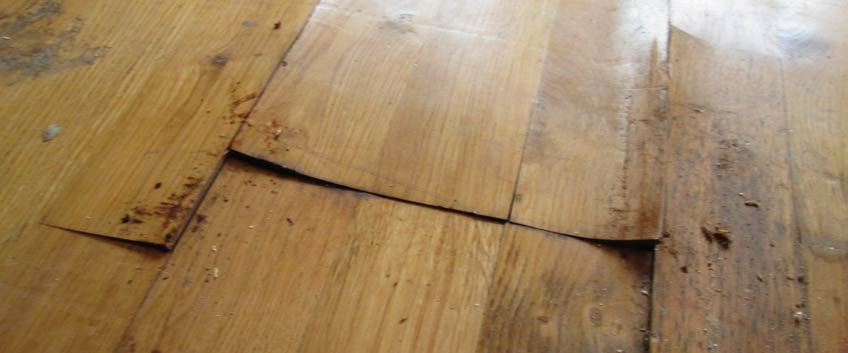
If you own, or you are planning to own a hardwood floor, you must know that moisture and water are the biggest enemies of wood. In general, wood and moisture make real wood planks “move”, because of their characteristic porous structure and the movement leads to enlarging and contracting. Contracting and enlarging are bad for your wooden floors because there is a high risk of serious damage such as cupping, ballooning, and loose and even broken planks.
Of course, one of your main priorities of having a hardwood floor is to minimise the risk of moisture and water damage as much as possible. However, accidents happen and there is nothing to do about that. High indoor humidity is another problem that your floor may face. The only thing you can do to minimise the damage is to react to the problem quickly and properly and not neglect and ignore it. Are your hardwood floors suffering from water damage, and if so, what can you do about that? How you can preserve the condition and flawless look of your floor is the topic of today’s article, so if you are interested, then keep on reading.
Unlike scratches and dents that are easily noticeable wood floor imperfections, water damage can remain not visible, but major issues for a long time. Fortunately, you can detect and find them. However, detecting water damage requires a thorough inspection of the whole floor. What do you have to look for? First of all, visually you have to keep your eyes peeled for any areas that appear warped or bent in any way, as this is a clear sign of water damage. Another sign of water damaging your floor is a dull finish, or if there is a cracking and splitting in floorboards. For example, if your floor is finished with wax, if it is water damaged, it will leave a greyish stain, when you sweep it with a towel.
If it is too hard to judge visually, then try to run your hands along the surface and look for warping and misshapen sections. Persistent dampness is even easier to detect and thus detects that the water has seeped completely into the floorboard. Of course, if you notice mouldy odours coming from your floor, this is most certainly because of mildew and mould growth. Dark corners are also something that indicates mould.
If you are still in doubt and you do not know for sure what the condition of your floor is and whether it is water-damaged, then ask the professionals for help. Experienced and skilled technicians will inspect thoroughly and precisely the whole floor and if it is damaged, they will recommend the best solution for your situation. Another suggestion we can recommend is purchasing a moisture-proof membrane underlay and applying it before installing the wooden boards, especially if you are fitting them in places, where interior humidity is an issue. This type of underlay will keep the whole construction protected from moisture and will also insulate the floor from a damp subfloor.